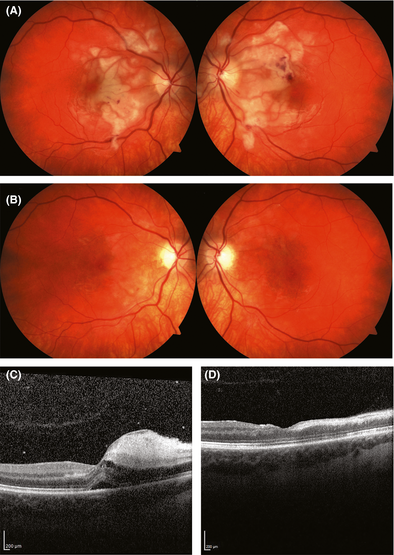The uncoupling of health care from aged care is a worrying trend
The full article is accessible to AMA members and paid subscribers. Login to read more or purchase a subscription now.
Please note: institutional and Research4Life access to the MJA is now provided through Wiley Online Library.
- 1. Royal Commission into Aged Care Quality and Safety. Terms of Reference. https://agedcare.royalcommission.gov.au/Pages/Terms-of-reference.aspx (viewed Apr 2019).
- 2. Nusem E, Wrigley C, Matthews J. Exploring aged care business models: a typological study. Ageing Soc 2017; 37: 386–409.
- 3. Hutchinson AF, Parikh S, Tacey M, et al. A longitudinal cohort study evaluating the impact of a geriatrician‐led residential care outreach service on acute healthcare utilisation. Age Ageing 2015; 44: 365–370.
- 4. Conway J, Dilworth S, Hullick C, et al. A multi‐organisation aged care emergency service for acute care management of older residents in aged care facilities. Aust Health Rev 2015; 39: 514–516.
- 5. Aged Care Act 1997 (Cwlth). https://www.legislation.gov.au/Details/C2018C00141 (viewed Apr 2019).
- 6. McMaster M, Fielding E, Lim D, et al. A cross‐sectional examination of the prevalence of psychotropic medications for people living with dementia in Australian long‐term care facilities: issues of concern. Int Psychogeriatr 2018; 30: 1019–1026.
- 7. Westbury JL, Gee P, Ling T, et al. RedUSe: Reducing antipsychotic and benzodiazepine prescribing in residential aged care facilities. Med J Aust 2018; 208: 398–403. https://www.mja.com.au/journal/2018/208/9/reduse-reducing-antipsychotic-and-benzodiazepine-prescribing-residential-aged
- 8. Walters H, Tierney L, Annear M, et al. Assessment and management of chronic respiratory conditions in frail older adults. Respirology 2016; 21: 145.
- 9. Haines HM, Bannon‐Murphy H, Amos T, Krones R. Prevalence and management of diabetes in residential aged care facilities in north‐east Victoria, Australia. Aust Fam Physician 2016; 45: 908–911.
- 10. Savvas SM, Toye CM, Beattie E, Gibson S. An Evidence‐Based Program to Improve Analgesic Practice and Pain Outcomes in Residential Aged Care Facilities. J Am Geriatr Soc 2014; 62: 1583–1589.
- 11. Hopcraft MS, Morgan MV, Satur JG, Wright FA. Edentulism and dental caries in Victorian nursing homes. Gerodontology 2012; 29: e512–e519.
- 12. Smith D, Cunningham N, Willoughby M, et al. The epidemiology of sexual assault of older female nursing home residents, in Victoria Australia, between 2000 and 2015. Leg Med (Tokyo) 2019; 36: 89–95.
- 13. Ibrahim JE, Bugeja L, Willoughby M, et al. Premature deaths of nursing home residents: an epidemiological analysis. Med J Aust 2017; 206: 442–447. https://www.mja.com.au/journal/2017/206/10/premature-deaths-nursing-home-residents-epidemiological-analysis
- 14. Groves A, Thomson D, McKellar D, Procter N. The Oakden report. Adelaide: Department for Health and Ageing, Government of South Australia, 2017. https://www.sahealth.sa.gov.au/wps/wcm/connect/4ae57e8040d7d0d58d52af3ee9bece4b/Oakden+Report+Final+Email+Version.pdf?MOD=AJPERES&CACHEID=4ae57e8040d7d0d58d52af3ee9bece4b (viewed Apr 2019).
- 15. Department of Health. 2017–18 report on the operation of the Aged Care Act 1997. Canberra: Commonwealth of Australia, 2018. https://www.gen-agedcaredata.gov.au/www_aihwgen/media/ROACA/2017%e2%80%9318-Report-on-the-Operation-of-the-Aged-Care-Act%e2%80%931997.pdf (viewed Apr 2019).
- 16. Ibrahim JE, Young C, Cunningham N; editors. Residential aged care communiqué. Victorian Institute of Forensic Medicine 2019; 14:1–6. http://vifmcommuniques.org/residential-aged-care-communique/#home (viewed Apr 2019).
- 17. Ibrahim JE, Chadwick L, MacPhail A, et al. Use of quality indicators in nursing homes in Victoria, Australia: a cross‐sectional descriptive survey. J Aging Health 2014; 26: 824–840.
- 18. Department of Health. About the National Aged Care Quality Indicator Program. Canberra: Commonwealth of Australia. https://agedcare.health.gov.au/ensuring-quality/quality-indicators/about-the-national-aged-care-quality-indicator-programme (viewed Apr 2019).
- 19. Werner ES, Polsky D. Public reporting drove quality gains at nursing homes. Health Affairs 2010; 29: 1706–1713.
- 20. Burgess S, Davis J, Morgans A. General practice and residential aged care: A qualitative study of barriers to access to care and the role of remuneration. Australas Med J 2015; 8: 162–170.






No relevant disclosures.